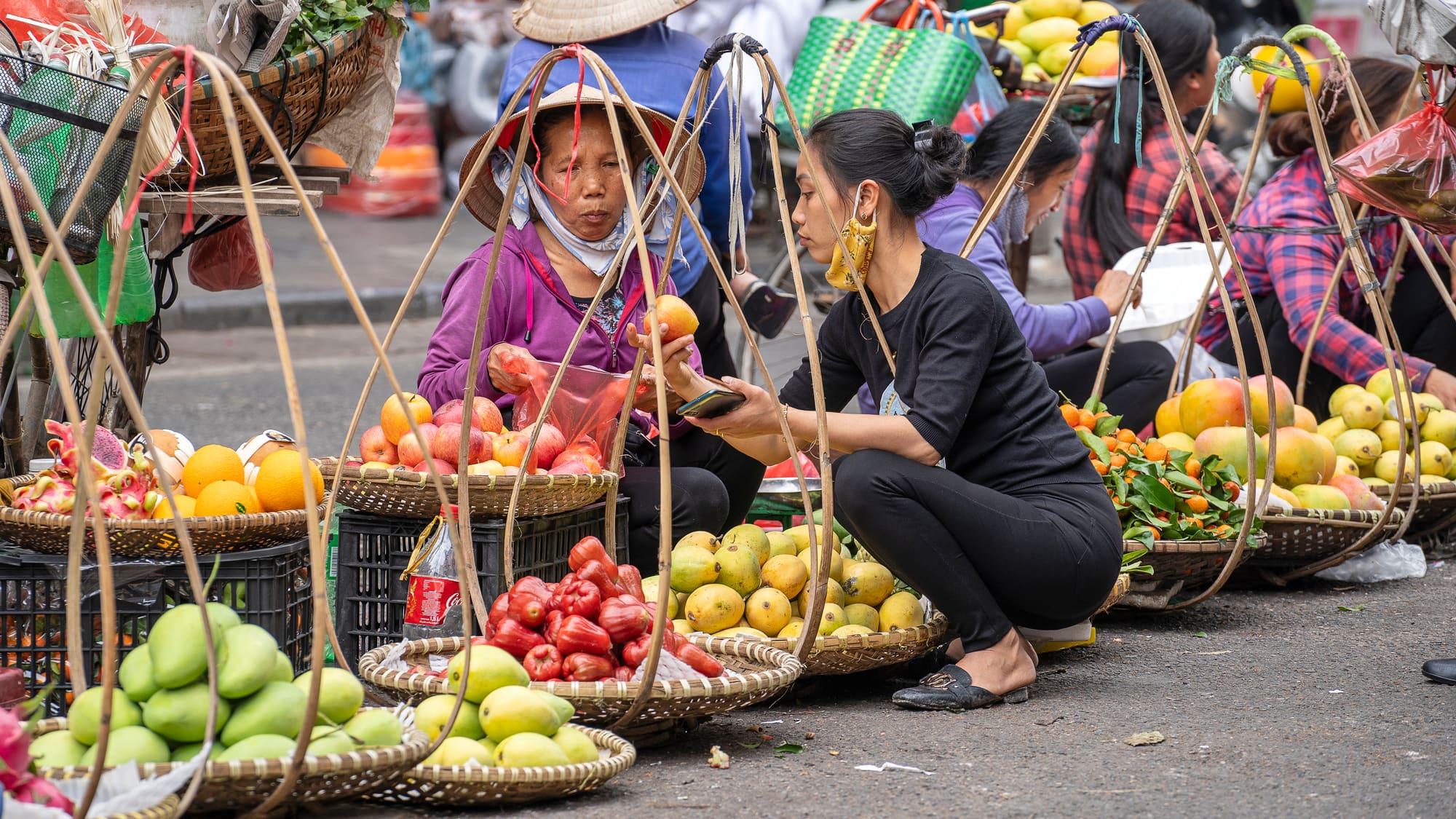Vietnam has seen significant shifts in investments, with more foreign direct investments being poured into the country’s various industries, food and beverage included. Even amidst the COVID-19 pandemic, Vietnam’s F&B manufacturing expanded by 5% in 2020, reads a report by Oxford Economics.
In Vietnam, the positive growth in F&B manufacturing was said to mirror the growth of the Vietnamese economy, which grew by 2.9% last year.
Data from Statista also projected Vietnam's F&B segment to show an annual growth rate of 4.98% from 2021 to 2025.
Indonesia also showed an improved productivity in its food sector, thanks to its use of technology and innovation. Overall, its industry grew by 3%.
But unlike Vietnam and Indonesia, regional peers Thailand and the Philippines’ manufacturing sectors shrunk by 4% and 5%, respectively.
The Philippines and Thailand’s agri-food sector were growing at an average annual rate of 3.8% and 10% from 2015 to 2019, before the coronavirus hit its territories.
However, the scale of the impact was considerably smaller than what the economy endured as a whole, according to the report, highlighting the essential nature of the agri-food production and distribution.
With supply chain disruptions, factory closures and limits to work movements, the F&B was heavily affected. Not to mention the food industry in Southeast Asia also relies on tourism, another industry crushed by COVID-19.

Despite the current challenging economic conditions, Oxford Economics’ findings show the agri-food sector in the region has remained resilient since 2019. In fact, the industry made an economic contribution of more than $717 billion, all four countries (Vietnam, Thailand, Indonesia and the Philippines) combined.
The sector filled nearly half of all jobs in these economies in 2019, or 127 million workers all in all. It also contributed more than a quarter of tax revenues, at US$95.6 billion.
The report considered different components of the industry. Commissioned by Food Industry Asia, it analyzed five years of economic activity across the entire food value chain, production of food and non-alcoholic beverages, and distribution (retail, catering, hospitality).
Agri-food industry faces hurdles
An earlier study conducted by Oxford Economies also highlighted the short-term challenges brought by the pandemic, and longer-term structural risks.
The outbreaks in the region could further push up agricultural commodity prices, and raise input costs for food manufacturers and retailers. This would domino to consumers, who may cut back on spending. Oxford Economics estimates that household food spending in the region would slip by 0.8% overall in 2021, as border reopenings get pushed back.
The report mentioned Europe’s farm to fork strategy, which ensures a sustainable food system from beginning to end, as a possible model for Southeast Asia. There’s also an urgent need for land and labor productivity improvements, including technological innovation, skills development and supportive public policies, that will foster long-term recovery.
“The agri-food sector’s performance is critical to household well-being and it is an economic powerhouse, responsible for millions of jobs and a major contribution to total economic output and government tax receipts,” said FIA Executive Director, Matt Kovac.
Indonesia faces the greatest risk to recovery, while the Philippines and Thailand are showing important vulnerabilities due to their dependence on tourism to revive their food industries.

Vietnam ranks the lowest in terms of recovery risk, owing to its vigorous agricultural sector, high employment and consumption rates as well as its maturing food service sector. Vietnam is also the leading producer and exporter of a variety of agricultural products including rice, fruits and vegetables, cashews, and coffee.
With strong headwinds projected for this year as the pandemic drags on, it is essential for Southeast Asia to remain mindful of fiscal adjustments, as any move can pose a risk to the recovery of a sector that drives the wider national economies.
"As the region looks to emerge from the pandemic stronger, it is important that policy-makers provide the most conducive conditions for the agri-food industry to successfully rebuild itself, and that fiscal policy is carefully planned, designed and communicated,” said James Lambert, director of Asian economic consulting for Oxford Economics.
